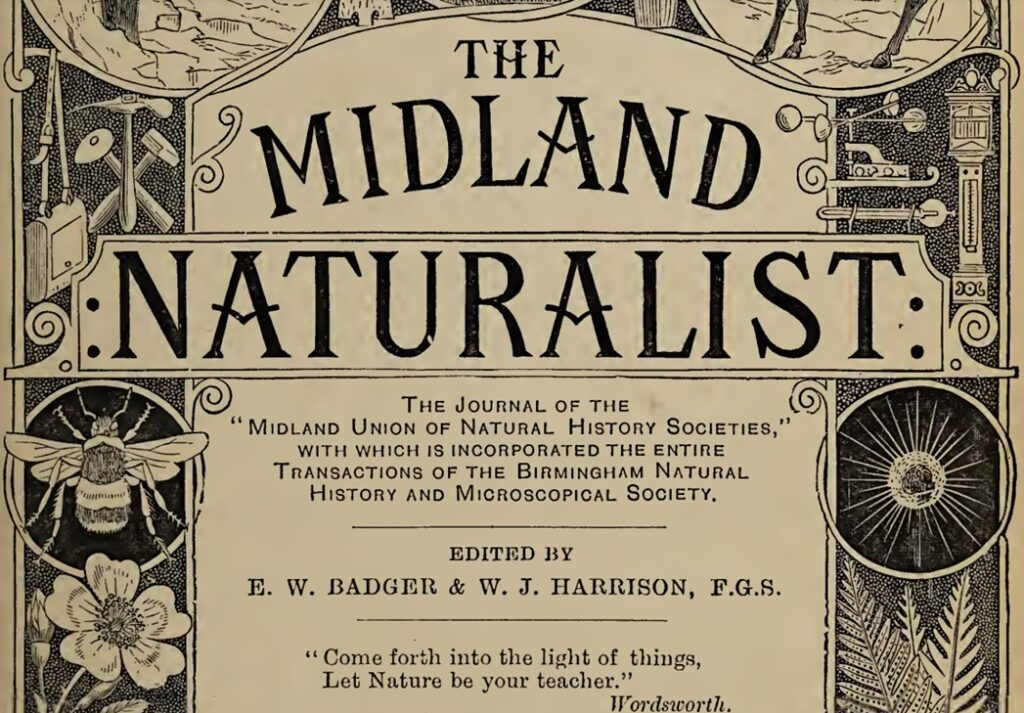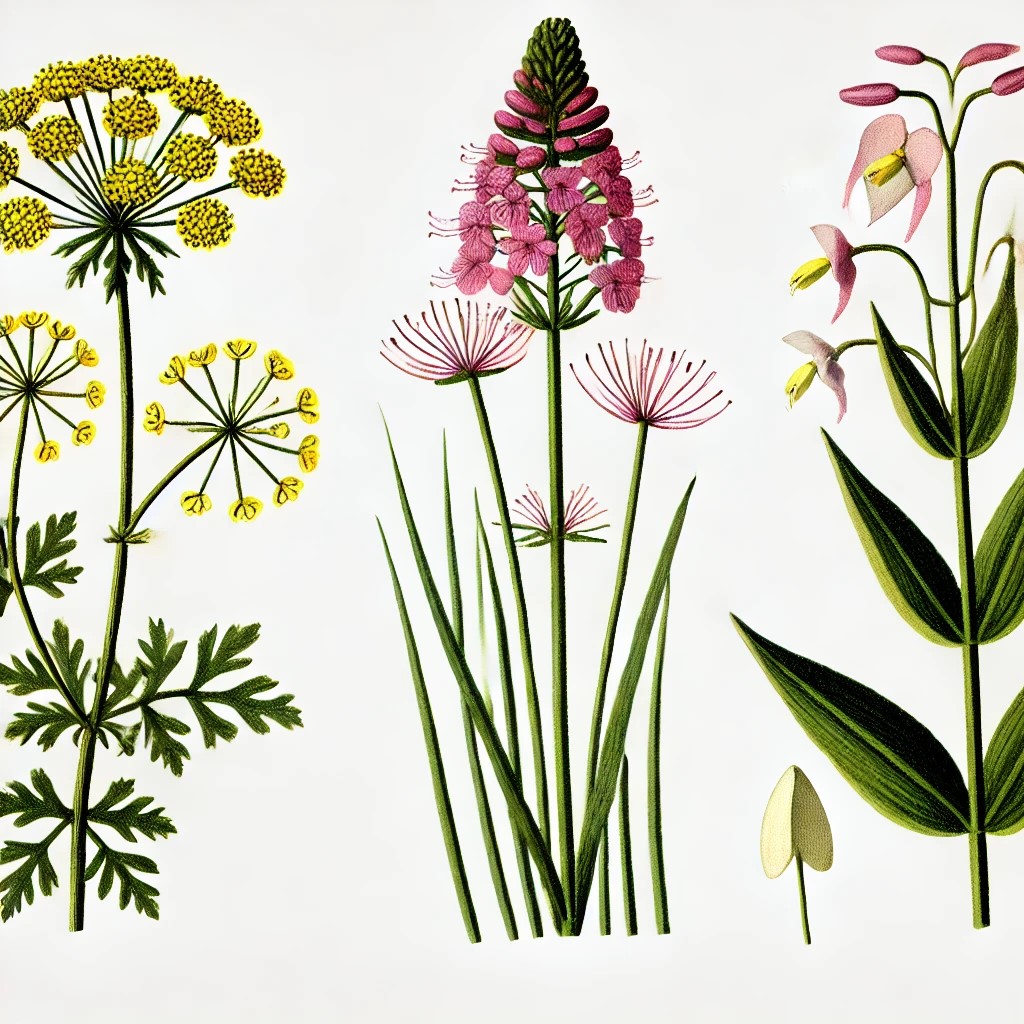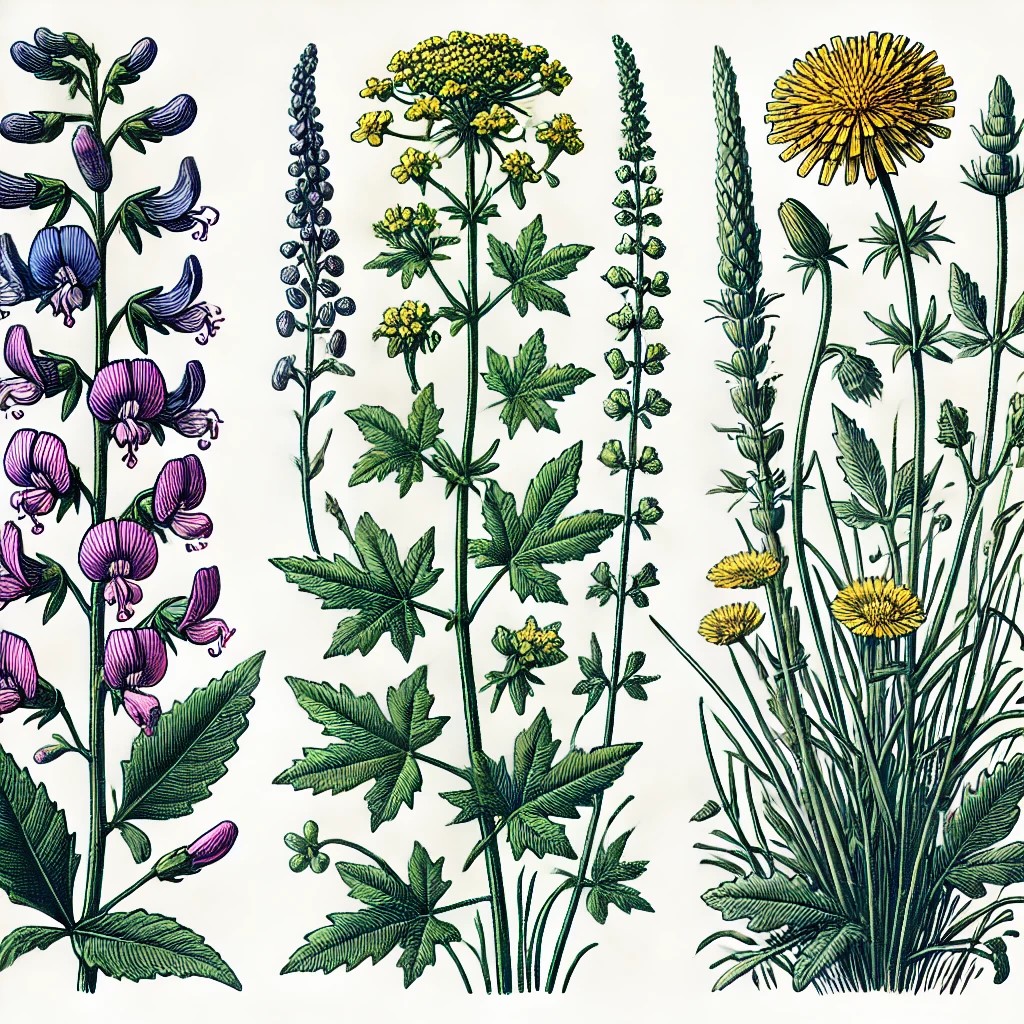
In 1886 the Midland Union of Natural History Societies published the Midland Naturalist, which outlined some of the areas natural history. One of the sections was entitles “Notes on the Rea Valley” by Henry Boyden, and his essay included wildflowers he found at several sites in Stirchley. These were in Lifford, Dogpool, and a bit further north up the Rea, near Holders Wood (although he called it Stocks Wood).

Silaus pratensis (Meadow Parsnip) – Showing slender stems with yellow umbel-shaped flowers and delicate foliage.
Stachys palustris (Marsh Woundwort) – Displaying tall spikes of pink-purple flowers with serrated leaves.
Sagittaria sagittifolia (Arrowhead) – Featuring arrow-shaped leaves and white flowers with a distinct purple center.
Lifford
In Lifford, the following wildflowers were found:
Silaus pratensis – Meadow Parsnip
Senecio erucifolius – Hoary Ragwort
Stachys palustris – Marsh Woundwort
Rumex hydrolapathum – Water Dock
Sparganium simplex – Simple Bur-reed
Sparganium ramosum – Branched Bur-reed
Potamogeton pectinatus – Fennel Pondweed
Sagittaria sagittifolia – Arrowhead
Alisma plantago, var. lanceolatum – Narrow-leaved Water Plantain
Scirpus setaceus – Bristle Club-rush (or Setaceous Scirpus)
Carex vulpina – Fox Sedge

Orobus tuberosus (Bitter Vetch) – With delicate leaves and small purple flowers.
Prunus domestica (Wild Plum) – Showing clusters of small fruits and slender branches with oval leaves.
Colchicum autumnale (Meadow Saffron) – Featuring large crocus-like purple-pink flowers emerging from the ground.
Dogpool
Dogpool had the following:
Orobus tuberosus – Bitter Vetch
Prunus domestica – Wild Plum (or Domestic Plum)
Adoxa moschatellina – Moschatel (also known as Townhall Clock)
Dipsacus pilosus – Shepherd’s Teasel
Petasites vulgaris – Butterbur
Colchicum autumnale – Meadow Saffron (also known as Autumn Crocus)

Genista tinctoria (Dyer’s Greenweed) – With slender green stems and small yellow flowers.
Vicia angustifolia (Narrow-leaved Vetch) – Featuring thin leaves and clusters of purple flowers on a climbing vine.
Hieracium vulgatum (Common Hawkweed) – Showing a tall stem with yellow daisy-like flowers and small toothed leaves.
Holders Wood
And, from woodlands down from Pebble Mill, described as Stocks Wood, but probably Holders Wood:
Polygala vulgaris – Common Milkwort
Genista tinctoria – Dyer’s Greenweed
Vicia angustifolia – Narrow-leaved Vetch
Prunus avium – Wild Cherry
Rubus idaeus – Raspberry
Hieracium vulgatum – Common Hawkweed
Lemna trisulca – Ivy-leaved Duckweed
Carex remota – Remote Sedge
Important Note: The images of wildflowers are generated by AI and are for illustrative purposes only. They may not accurately show the wildflowers.
See the book here.